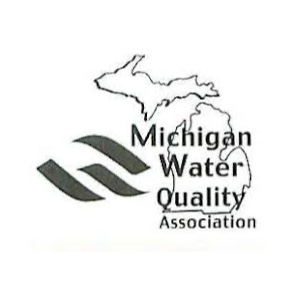Per- and polyfluoroalkyl substances (PFAS) have become a growing concern for drinking water safety. According to NPR’s recent article, “PFAS are a class of man-made chemicals that are used to waterproof and stainproof many products – from raincoats to mascara, couches and cooking pans.” These chemicals, often called “forever chemicals,” are persistent in the environment and human body, leading to potential health risks.
In this blog, we will explore PFAS, their dangers, how they enter our drinking water, government regulations (or lack thereof), how to detect their presence, and, most importantly, how to remove them from your drinking water.
PFAS: Defined
PFAS are a group of man-made chemicals used in various industries worldwide since the 1940s. According to the Environmental Protection Agency (EPA), “There are thousands of PFAS chemicals, and they are found in many different consumer, commercial, and industrial products.” They are found in everyday products such as non-stick cookware, water-resistant clothing, stain-resistant carpets and fabrics, cosmetics, firefighting foams, and any products that are grease-resistant, water-resistant, and oil-resistant. PFAS are highly resistant to heat, water, and oil. This makes them incredibly durable but also environmentally persistent, which is why “PFAS are found in water, air, fish, and soil at locations across the nation and the globe,” according to the EPA.
What are the Dangers of PFAS?
Studies have linked PFAS exposure to a wide range of diseases and health problems. According to the Natural Resources Defense Council (NRDC), “PFAS have now been linked to a wide range of health risks in both human and animal studies—including cancer (kidney and testicular), hormone disruption, liver and thyroid problems, interference with vaccine effectiveness, reproductive harm, and abnormal fetal development.” Due to their persistent nature, PFAS accumulate over time, which increases the risk of adverse health effects.
Infants and young children are particularly vulnerable to PFAS exposure, which can affect growth, learning, and behavior. Based on animal studies and research, the Agency for Toxic Substances and Disease Registry (ATSDR) states:
- “Most animal studies have tested doses of PFAS that are higher than the doses people experience from environmental exposure.
- These animal studies have found that PFAS can cause damage to the liver and the immune system.
- PFAS have also caused low birth weight, birth defects, delayed development, and newborn deaths in lab animals.”
How Are People Exposed to PFAS?
PFAS exposure occurs in several ways. The most common routes include consuming contaminated food or water, using products made with PFAS, and inhaling dust containing PFAS. PFAS can contaminate food from packaging materials or through soil and water where food is grown. Occupational exposure can occur in industries that manufacture or use PFAS. According to the EPA, “Current research has shown that people can be exposed to PFAS by:
- Working in occupations such as firefighting or chemicals manufacturing and processing.
- Drinking water contaminated with PFAS.
- Eating certain foods that may contain PFAS, including fish.
- Swallowing contaminated soil or dust.
- Breathing air containing PFAS.
- Using products made with PFAS or that are packaged in materials containing PFAS.”
Once in the body, PFAS can remain for a long time, accumulating and potentially leading to health issues.
How Does PFAS Get Into Drinking Water?
PFAS can enter drinking water sources through various pathways. Industrial facilities that produce or use PFAS can release them into the air, soil, and water. Wastewater treatment plants and landfills can also be sources of PFAS contamination. Firefighting foams used at military bases, airports, and firefighting training sites are another significant source of PFAS pollution. These chemicals can seep into groundwater, which may be a source of drinking water for many communities.
Government Regulations (or Lack Thereof)
Regulations on PFAS vary globally, with some countries implementing strict limits and others lacking comprehensive standards. The Environmental Protection Agency (EPA) has created and established health advisories for certain PFAS in the United States, but it has not set enforceable drinking water standards.
Some states have taken action by setting their own limits and guidelines. According to Safer States, “Eleven states (ME, MA, MI, NH, NJ, NY, PA, RI, VT, WA, and WI) have standards such as Maximum Contaminant Levels (MCLs) for certain PFAS in drinking water.” The lack of uniform regulations and enforceable standards poses a challenge for effectively managing and reducing PFAS contamination.
How to Discover PFAS in Your Drinking Water
Detecting PFAS in drinking water typically requires specialized testing, as these chemicals are not usually included in standard water quality tests. Unlike sulfur and iron, PFAS chemicals are not easily detectable by taste, sight, or smell. According to the U.S. Geological Survey (USGS), “Testing is the only way to confirm the presence of these contaminants…”
Homeowners can have their water tested by certified laboratories that use advanced analytical methods to identify and quantify PFAS concentrations. Public water systems are sometimes required to test for PFAS and report the findings, but this is not universally mandated. Staying informed about potential contamination sources and local water quality reports can also help in identifying PFAS presence.
How to Get PFAS Out of Your Drinking Water?
Removing PFAS from drinking water can be challenging, but several treatment methods have proven effective. According to the EPA, “Here are some of the types of filters that are currently available and can be effective at reducing PFAS:
- Charcoal (Granular Activated Carbon or GAC): These filters use carbon to trap chemicals as water passes through them.
- Reverse Osmosis (RO) Systems: Reverse osmosis is a process that forces water through an extremely thin barrier that separates chemicals from the water.
- Ion Exchange Resins: Resins are tiny beads that act like powerful magnets that attract and hold the contaminated materials from passing through the water system.”
These systems are available for both point-of-use (e.g., under-sink filters) and point-of-entry (e.g., whole-house systems) applications. It is essential to choose a treatment system certified to remove PFAS and maintain it according to the manufacturer’s guidelines to ensure proper performance.
Final Thoughts
In conclusion, PFAS contamination in drinking water is a significant concern due to the disease and other health risks associated with these persistent chemicals. Understanding what PFAS are, how they affect us, and how they enter our drinking water is crucial for addressing this issue. While government regulations are still evolving, with the EPA making history with new regulations in 2024, proactive measures such as testing your water and installing appropriate filtration systems can help protect you and your family from the dangers of PFAS.



